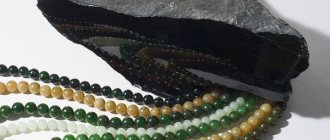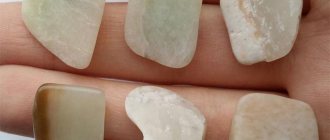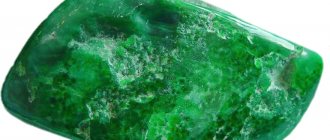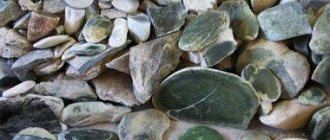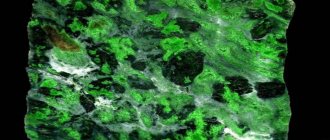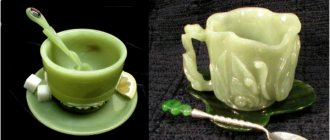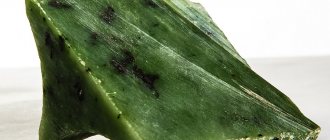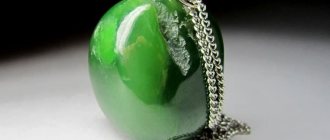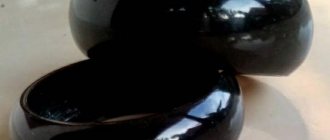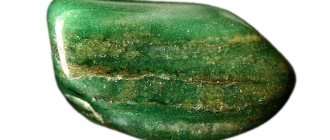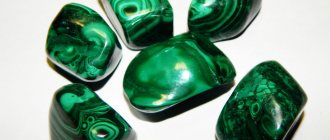If this is your first time faced with the question of choosing a jade egg, then you will probably be interested in knowing:
- how the varieties (classes) of jade differ from each other,
- why are some more expensive, others cheaper,
- what evaluation criteria exist for jade,
- What is the difference between the classes of jade presented on our website?.
If you are only interested in the visual (external) side, just look at these photos and/or videos, it shows in detail what the difference is between the varieties. If you want to study the issue of differences between varieties in more detail, read the article below.
What colors, shades, inclusions can Premium eggs have?
What colors, shades, inclusions can Optima class eggs have?
What colors, shades, inclusions can Standard class eggs have?
What color can Luxury eggs have?
What colors, shades, inclusions can Platinum class eggs have?
So, all natural stones differ from each other in physical and energetic properties. Physical factors include viscosity, density, color, uniformity of color, the amount of impurities in the color of the stone, and transparency. In terms of energy, there are stronger stones, and there are less strong ones. Same with jade.
Jade in China, for example, is considered a precious stone. But just as there is a big difference between a simple emerald crystal and a jewelry emerald, there are also different types of jade. The higher its density, hardness, and the more uniform its color, the more valued it is.
So, there is ordinary ornamental jade, and there is jewelry jade. Jewelry jade differs from ornamental jade in higher strength, greater transparency, homogeneity and uniformity of color, and an important difference is the energy effect.
Color range of natural jade
The stone is common. Shades of green are familiar to him.
However, rarer and more valuable varieties may come in other colors, such as:
- white (yellowish-white, white-gray, waxy and milky white);
- honey (opaque, all shades of honey);
- gray (grayish green);
- yellow (lemon to brownish, yellowish with milky areas, greenish-yellow);
- blue, light blue (found in Yakutia);
- red (one of the rarest and most expensive);
- black.
Jade is characterized by green shades.
There are stones of a special structure, which gives the jade a “cat’s eye” effect.
All other shades (purple, etc.) indicate an outright fake. And the rarer the color of the jade, the higher the risk of running into it.
Tropical trend
For a tropical style, choose deep, rich jade shades that create an original, exotic and mysterious atmosphere. Complete the interior with dark wood furniture for an exotic feel, and accessorize with copper and gold tones for an added touch of sparkle. And, of course, don't be afraid of exotic prints!
What is fake jade made from?
Everything that is offered on the jade market can be divided into several groups:
- stones that have not been subjected to any influence other than artistic or jewelry processing;
- nondescript or low-quality natural minerals that have been specially treated to make them more attractive.
Refinement methods can be:
- physical, which change the entire structure of the stone (irradiation, exposure to high temperatures and pressure);
- chemical (impregnation with compounds that increase transparency, or coloring, which is washed out over time, sometimes varnishing).
Fakes are:
- pressed production waste from natural minerals;
- cheap natural stones resembling jade;
- pacifiers made of glass and plastic.
Fake jade is made from natural, cheap stones.
Main conclusions
- Green jade is a semi-precious gemstone. It has high strength and fibrous structure. The green color is formed due to impurities of magnesium and iron.
- Jade is valued in Chinese culture. Today it is used in esotericism and lithotherapy.
- Zodiacally suitable for Libra, Capricorn and Virgo. Not recommended for Sagittarius and Taurus.
- Demanded in the jewelry industry, crafts and healing.
- It differs from copies in its fibrous structure and ability to retain heat for a long time.
Share your impressions about green jade and leave feedback in the comments.
Visual recognition methods
The buyer should be wary of too bright unnatural color, graininess, striping, blurring of the boundaries of color segments, excessive transparency and suspicious uniformity.
Shine on the surface
Jade lends itself well to processing and polishing, but with rare exceptions its shine remains muted, matte, oily, silky, greasy, waxy. This is his distinctive feature.
Real jade has a shine on the surface.
Rough plastic fakes have almost no shine, and all other imitations have it too bright to fit the listed definitions.
Pattern and structure
If, with the help of a magnifying glass, and even more so without it, graininess is clearly visible in the product, then it is definitely not jade. Its structure is a mesh of the finest fibers that make up unique patterns. If the fibers are too obvious or patterned, then it is most likely a crude plastic or glass fake.
Jade can be either uniform (rarely) or patterned. The stone patterns are chaotic and unique. Therefore, their similarity on several products raises suspicion.
The color boundaries of a natural mineral are clearly marked, unlike most fakes.
Due to its structure, jade almost does not transmit light (with the exception of thinned edges or plates 1.5-2 cm wide).
Translucency or transparency in all other cases clearly indicates a fake.
Place of Birth
The traditional deposit of the mineral was previously considered to be the Chinese province of Xinjiang, however, in the 18th century, the stone began to be actively mined in Burma. Soon, jade deposits began to be found all over the world. The breed is developed in the Eastern Sayan, namely in the Ulakhondinskoye, Ospinskoye and Bortolskoye deposits.
For a long time, Burma was considered the only deposit. Nowadays, in addition to China and Burma, jades are mined in Germany, Italy, Central Asia, India and Switzerland, as well as on the islands of Polynesia and the Pamirs.
There are also deposits of the mineral on the territory of Russia, and they are located in the Southern Urals. But basically, only specimens that have a greenish-gray color are mined there.
Check for mechanical damage
A seller who is confident in the quality of his product and knows how to distinguish jade from a fake willingly demonstrates evidence of the authenticity of the stone. Otherwise, this is a reason for doubt.
It is impossible to spoil natural jade using the methods described below.
Scratching from needles or blades
You can scratch something on the product. If the hardness of such an object is higher than that of the mineral, a mark will remain; if less, the stone will be unharmed. However, you should not scratch the inclusions, which have a different structure and may be damaged.
Fake jade can be scratched with a needle.
The table below will help you preserve your jade product and come to the right conclusions.
Comparative table of hardness on the Mohs scale with permissible deviations of 0.5 in both directions
| Material | Hardness |
| Nephritis | 6 |
| Jadeite, quartz glass, natural quartz | 7 |
| Metal (except aluminum), window glass | 5 |
| Other minerals most often passed off as jade | 4 or less |
That is, a fragment of quartz glass or a piece of quartz will spoil all of the listed minerals, except jadeite. And on the window glass, natural jade itself will leave a mark. A nail, knife, pin, or sewing needle will not harm jade and jadeite, but will scratch other fakes.
However, this method is only suitable for high-quality, hard jades.
Impact strength
High-quality jade is 2 times stronger than steel, which is why in ancient times weapons were made from it. It cannot be broken with a hammer; products made from it remain unharmed when they hit the floor. However, due to its plasticity, when it hits a hard surface, small dents may appear on it.
High-quality jade is stronger than steel.
If the stone still manages to be broken, its fragments will be needle-shaped stone chips.
Test by fire
It is enough to hold the product over the flame for half a minute, and the surface will become smoky. But a black spot on natural jade can be easily wiped off without a trace, unlike a fake. The plastic over the fire will begin to smell burning and melt.
The binder component in the pressed material will not hold up and an unpleasant chemical odor will appear.
It is not recommended to heat the thinned edges of products so that a sharp temperature change does not cause cracks.
Historical reference
The stone was widely used in ancient civilizations. In many cultures, its importance was simply invaluable, since in some of them they even worshiped the mineral. The stone has gained such popularity due to its durability and ability to be processed.
The Indians who lived in America used the gem in everyday life for several thousand years. When meeting with the conquistadors, the Indians were perplexed by the indifference of strangers to jade, since they did not even know about its existence. According to some historians, Montezuma, the Aztec ruler, learned from Cortes that the Spaniards were only interested in gold and silver.
In the southern part of America, products similar to modern piercings were made from stone, which were worn as jewelry on the lips. Such products on a person’s lips testified to his readiness to be a servant of the spirits. In some tribes, the number of such decorations was a sign of high status in society.
Hei-tiki jade amulet
In New Zealand, Maori made hei-tiki from jade - an amulet in the form of a portrait or figurine of a person who protected his owner. The amulet was passed down from generation to generation, and when the last representative of the family died, the product was buried with the person. These people valued jade so much that war often broke out between Maori tribes over it.
The Turkish people decorated rings, belts and weapon hilts with stone, because they believed that it brought good luck in battle.
In ancient China, entire treatises were devoted to this mineral. For some time it, together with metal coins, was used as a monetary unit. Weighing gold was carried out only using jade weights. They also made plates, which were later used to certify various documents. In ancient China, competitions were held between warriors, and the winner was awarded jade.
Lithophones, musical instruments made from this mineral, were extremely popular in the Middle Kingdom. Among the greatest admirers of such an instrument was the ancient philosopher Confucius. Some inhabitants of the Middle Kingdom made pillows from jade. However, only members of the imperial family could afford such pleasure.
Formal signs of fake jade
First of all, this is the seller’s refusal to examine the goods and the lack of a complete package of accompanying documents.
Low cost
First of all, the suspiciously low price for a clearly unusual specimen should alert you. In Russia, the cost of local minerals and products made from them lags behind world prices, but focusing on domestic prices when purchasing goods abroad is a big mistake.
It is primarily influenced by the color of the stone. So 1 kg of blue or red jades can cost up to 10 thousand dollars.
Of the stones suitable for jewelers, the most valuable are white and deep green, the price of which is at least $50 per 1 carat. The cost of a green jade ball is approximately 350-400 rubles, and a white one - from 600 to 1000. And if a bracelet or beads are offered at the price of 1-2 beads, it means that we are talking about a deliberate fake. But scammers may offer fakes at a higher price for credibility reasons.
The price is influenced by many factors, including subjective assessments. But it is useful to compare average prices in Russia and China, where jade has been valued more than gold since ancient times.
THE PERFECT COMBINATION
The ideal energy combination for a woman is 2 stones - white and black jade. These are 2 powerful energy conductors, 2 protective amulets. This is the basis of the World - black and white, Yin and Yang! Like day and night, fire and ice...
| Black jade | White jade |
Black jade is the energy of the earth, and white jade is the energy of the cosmos, they balance the energies of the chakras, lower and upper. Moreover, a black jade testicle can be worn inside the female womb - in the lower part of the body, and it will be responsible for the physical component: vitality and sexual energy, health, immunity, the ability to achieve goals in life, receive material benefits, give and receive love, and a small white jade (for example, a pendant or disk) can be worn as a decoration around the neck - in the upper part of the body and it will be responsible for the spiritual component - developing your talents, intuition, clairvoyance, the ability to influence people, think outside the box and make the right decisions in any situations, receive any information from the energy-information field of the Universe. Ideally, this combination of two types of jade is suitable for spiritual practices and meditation, during which the power of the stones will be revealed even more. The stones will charge like a battery, using you as a conductor. It will also be very useful to have them with you during an important matter or event, when you especially need energy replenishment and help from higher powers.
Just remember that together with these unique stones you take responsibility for your actions, thoughts and actions! They must be clean!
Photo comparison of natural stone and fakes
If you photograph the products from the right angle and distance and with the right lighting, then a specialist will be able to distinguish between an item made of natural jade and a fake by its shine and other visual features.
Photo comparison of the original and the fake. Photo comparison of the original and the fake. Photo comparison of the original and the fake. Photo comparison of the original and the fake. Photo comparison of the original and the fake.
Medicinal properties
The healing properties of jade are also interesting. The most popular area of its use by lithotherapists is the pathology of the genitourinary system. In this case, it functions as a pain reliever. The crystal also has a very positive effect on other parts of the gastrointestinal tract when one or another dangerous illness occurs there.
If we turn to historical facts, it is worth recalling that even ancient healers gave belts with gems to women expecting a child to wear. They were convinced that this helps pregnant women prepare for the birth of a baby without complications and reduce pain during labor.
By the way, modern alternative medicine uses heating pads containing fragments of this geological rock to reduce painful syndrome. Another unusual property is also used - to retain heat for a long period, due to which it has the most beneficial effect on the diseased part of the body.
With regular use of such therapy, it becomes possible to actually improve hearing and cure eye diseases. The corresponding products can even have a healing effect on the nervous system.
Mining locations
At least one deposit of Chinese jade exists on every continent, excluding Antarctica (but perhaps they simply have not yet been discovered there). Mining is carried out by quarry method, as well as in placers. Chinese jade is sometimes found in marble, slate and gneiss rocks.
Main deposits:
- China - provinces of Hotan, Liaoning, Henan.
- Russia - Ospinskoye (Sayan mountain range), Buromskoye and Golyubinskoye (Vitim River).
- USA - states of California, Montana, Alaska and Washington.
- Europe - Poland.
- New Zealand is everywhere.
It is also found in Myanmar, Mexico, Canada and various parts of the African continent. At the same time, stones of Chinese and New Zealand origin are most valued.
Zodiac compatibility
Jade is an absolutely “earthly” gem, clearly associated with the element of Gaia, that is, the Earth. According to the horoscope, this stone is suitable for many signs, but best of all - Virgo, Aquarius and Pisces. Oddly enough, Taurus does not like the pebble; Libra should wear it with some caution.
Only red jade is suitable for the zodiac sign of the element of Fire, especially Leo!
| Zodiac sign | Compatibility (“+++” – fits perfectly, “+” – can be worn, “-” – strictly contraindicated) |
| Aries | + |
| Taurus | + |
| Twins | + |
| Cancer | + |
| a lion | + |
| Virgo | + |
| Scales | +++ |
| Scorpion | + |
| Sagittarius | + |
| Capricorn | + |
| Aquarius | + |
| Fish | + |
(“+++” – fits perfectly, “+” – can be worn, “-” – is strictly contraindicated)
